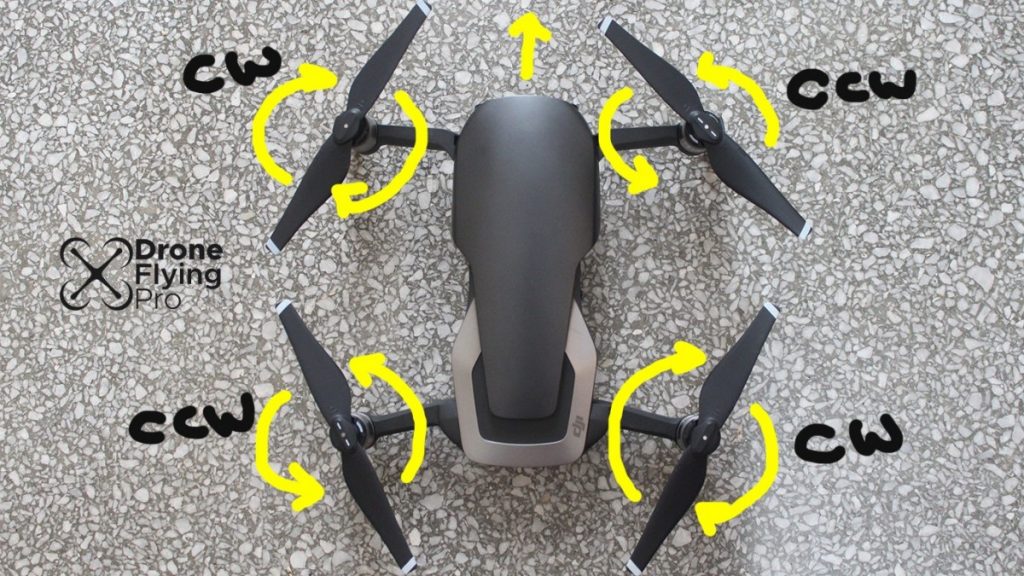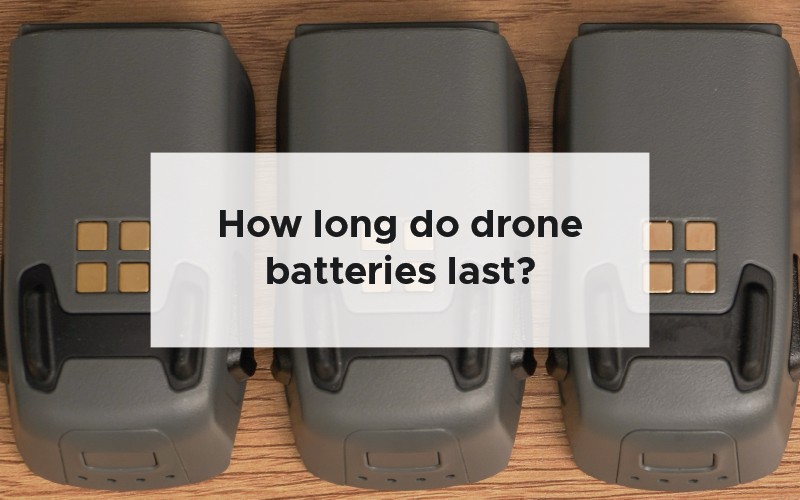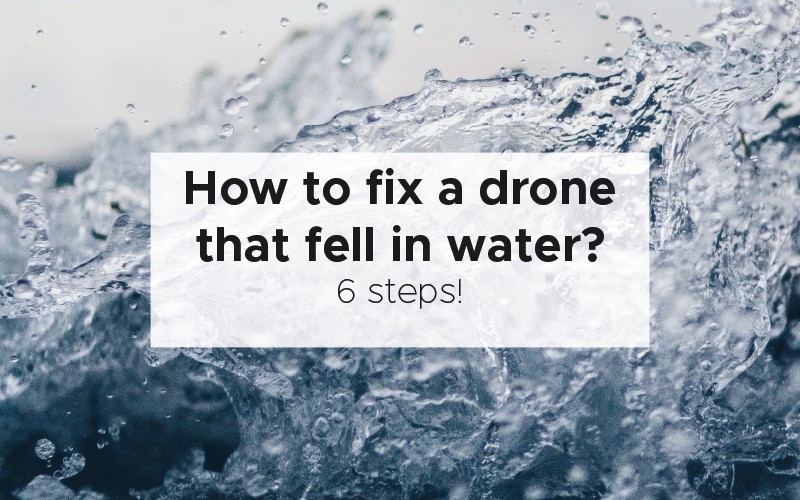When I first purchased my drone I was concerned I would break it almost immediately. I’ve heard of many stories where people have crashed their drone within the first few days – if not hours – of receiving it. Drones are becoming easier to fly, due to all of the advanced artificial intelligence integrations, but this also fills beginners with confidence which results in higher levels of incidents.
Drones break easily because they are made out of light materials which are easily damaged during heavy landings. Their shape also means that if they land on an arm a lot of leverage is placed on joints. Also, beginner pilots make the mistake of not learning to fly in beginner mode first.
The combination of the drone’s material, shape, ability to move fast in a 3D environment, and the inexperience of beginner drone pilots that are impatient to fly as high and as fast as possible mean that drones have a bad reputation of breaking easily.
However…
I have had my drone for many years. My slow introduction to the different features and the approach I took of slowly expanding my capability and understanding of how the drone reacts to my commands (including automated flight and photo options) means I have never had a serious drone incident.
I continuously keep myself updated with the latest drone rules and regulations and always fly within my capability. If it is too windy, I land. If I am unsure about the safety of the drone, I land.
Here are all of the reasons why drones break easily…
1. They move fast
Drones can move incredibly fast.
Here are the vertical and ground speeds that each of the most popular and most recent DJI drones can achieve. For a full rundown on the fastest drones you can buy check out my other article – click here.
| Drone | Vertical speed | Ground speed |
|---|---|---|
| Mavic Mini 2 | 5 m/s | 16 m/s |
| Mavic Air | 4 m/s | 19 m/s |
| Mavic Air 2 | 4 m/s | 19 m/s |
| Mavic Air 2S | 6 m/s | 19 m/s |
| FPV | 10 m/s (no limit in M mode) | 39 m/s |
| Phantom 4 V2.0 | 6 m/s | 20 m/s |
| Inspire 2 | 5 m/s | 26 m/s |
The fastest consumer-level drone on this list is the DJI FPV drone which can move at 39 m/s. If you are a beginner to drone piloting this will be very intimidating and even the smallest of errors could result in a catastrophic collision.
The momentum of a drone can easily cause the lightest of bumps and interactions with objects to become a damaging event.
The faster that your drone moves the less likely you are able to respond quickly enough to obstacles or issues during your drone flight.
I recommend that you get used to your drone’s capability very slowly by first switching the drone to beginner mode and only turning it off once you are happy with how the remote control and the drone interact with each other.
2. 360 degree range of motion
When I first bought my drone it took me a while to confidently navigate the drone’s 360° range of motion.
You see, pretty much everything else we maneuver or control, such as a car, boat, or bike, moves on a 2D surface – like the road or ocean. We don’t have to worry about what is above us because we do not climb vertically.
Drone pilots have to have an awareness of the drone’s position in 3D space and the obstacles that are above, below, to the side, in front, and behind.
Even though you should always keep your drone in a direct line of sight sometimes the environment doesn’t allow for a clear view around the drone.
I’ve been saved by the forward facing and back sensors of my drone many times which has stopped me from reversing into a tree or other obstacle that I simply didn’t pay attention to.
This 360° range of motion means that the drone pilot needs to be aware of exactly what is around the drone and which sensors are able to help. For example, I have to pay particular attention as to what is on the side of my drone as it does not have side facing sensors. This means that I’d never turn the drone to the left or right without being 100% sure there is nothing either side.
More modern consumer drones have 360° high resolution cameras protecting the drone from all angles. This typically comes at a premium price point.
3. Bits that stick out
The general shape of a drone means that if it has a heavy landing the force of the incident is typically concentrated on limbs that stick out and therefore gets concentrated around moving parts – particularly if your drone is foldable.

Due to the way that drones operate their propellers need to be kept as far away from the body of the drone as possible and this means that there is a balance between portability and length of the arms of the drone.
Also, the propellers of the drone are relatively long which adds to the total length of the drone significantly.
Simple physics tells us that you can increase the force of a movement simply by levering it. Drone arms and propellers can act like the perfect lever concentrating the force of the incident onto fragile drone components.
4. Construction materials are light
Drones are necessarily built from light materials. The flight time of a drone is directly correlated with the amount of weight that it is carrying.
Consumers want their drone to fly for as long as possible. And therefore drones are made out of plastic, plastic composites, and other lightweight materials such as carbon fibre.
The main body of the drone (the frame) is typically made of a light metallic alloy. This means that when drones are involved in a small accident the weakest link is typically the plastic arms or the shell which surrounds the internal electronic components.
5. Batteries have a limited lifespan
Batteries also break easily due to their very important component – the battery.
Batteries are typically a lithium polymer composite. The lithium polymer composite of a battery has been designed to be as lightweight as possible whilst also holding as much charge as possible.
Lithium polymer batteries are relatively temperamental in the way that they need to be charged, transported, and stored. Unlike lithium ion batteries found in most common laptops and small electronic devices, lithium polymer batteries need to be stored at about 50% capacity and need to be protected diligently against huge fluctuations in temperatures.
They also have a lifetime of approximately 500 cycles which means that after approximately two years of regular usage they will need to be replaced. If the drone is particularly old it can be hard to find replacement batteries and this leads to drones being discarded.
6. Transport damage
The reason many people, and I, bought a drone is because I want to take it with me on adventures and capture some incredible footage of my holidays and travels. I have taken my drone everywhere I have been on vacation since owning it. This includes Lord Howe Island, outback New South Wales in Australia, and many other regional and coastal towns around my home city of Adelaide.
The fact that you are taking a very sensitive electronic device in your carry on baggage or rucksack means that there is a potential for it to become damaged during transport.
Personally, I have purchased a separate bag which only houses my drone and my camera equipment which means that I am very careful with its transport.
Some people purchase a pelican hardcase which can improve the protection of the drone during transport but for me it is a little bit too bulky.
7. Pilot error
One of the most common reasons for drones breaking is inexperienced pilot error.
Drones are becoming easier to fly within minutes of opening the box. Drone manufacturers understand the importance of getting people into the air as soon as possible and have therefore integrated a ton of different advanced technologies such as auto takeoff and landing, auto hover, headless mode, and many automated Instagramable video options.
The early wins of a drone pilot can easily translate into misplaced confidence.
Drones are a tool and, like any other tool, you need to understand all of the working components and options for making your drone fly exactly how you want it to fly.
Too many new drone pilots become heroic in the early few days of owning their drone – because it looks very easy – but the simplest of silly mistakes can easily cause a drone to become damaged and broken.
Slowly increasing your capability and learning about all of the software and hardware features of the drone, the remote control, and the apps is the only way to ensure that your drone will return safely after every flight. It is also highly recommended that you get to grips with all of your local laws and regulations.
8. Attract animals and people
While you are flying your drone you are likely to attract birds, bees, and people.
I have talked about this in my YouTube videos, and the bee one is linked below:
This was certainly one of the most interesting components that I learned about flying a drone – you can’t keep the animals and people away.
I voice been so careful to be respectful to wildlife and other people while flying my drone. What drone piloting didn’t prepare me for is the fact that the sound of the drone and people seeing you flying a drone attracts attention.
My drone has been swooped by birds, attacked by bees and attracted people to my location even though I have been very careful to fly my drone away from them.
The increased density of animals and people also increases the likelihood that your drone will become broken through bird attack or insect casings getting into the motors or internal components of the drone.
9. They are not waterproof
the perfect drone day is something I live for. However, whether changes very quickly and I sometimes find myself flying in less than desirable conditions. One of those conditions is drizzle or rain.
If you are drone fishing or you want a waterproof drone there are some available on the market and for a full run down on the best drones and tips currently available check out my other article – click here to be taken to the insider knowledge.
Drones quite often operate at high temperatures and rely on airflow through grills and grates to cool down. These grills and grates are perfect places for water to get into your drone.
It is not advisable to fly your drone in the rain as any small amount of moisture becoming trapped in the drone can cause significant issues and electronic shorts. As the propellers are spinning it is quite common for the water droplets to be further chopped up becoming smaller and therefore make their way into the small grills or ventilation ports on your drone.
10. Folding parts
Drone pilots want to take their drones everywhere. And this means that their portability has been increased by manufacturers.
To increase the portability there are a number of drones which have foldable arms. Every time that you want to fly your drone these alms have to be extended. Also, some drones require the arms to be extended for accessing components like the battery, or gimbal casing.
This continuous opening and closing of the drone parts puts an increased amount of wear on to joints of the drone.
Personally, I have voice been very careful with my drone arms and I have not forced open any of the components.
11. Old drones = no parts
When a drone breaks our first instinct is to fix what is broken. In some cases, such as a broken drone arm, this can be relatively easy to do on our own.
As drones get older and the manufacturers replace old models with updated, newer, models it becomes harder and harder to replace broken parts.
Even my DJI Mavic air will struggle to find new batteries or components.
The lack of availability of components from the manufacturer of old drones means that broken drones quite often end up in the E waste. The issue of repairing your old electronic components has been a hot topic in recent years and, luckily, repairing your electronics should get easier and easier as new legislation is being introduced to protect consumers from planned redundancies.
What is the most common cause of drone accidents?
As drones are becoming more popular the number of accidents is also increasing. There are two major components which cause the majority of drone accidents.
Poor preparation
Many drone accidents can be solved by preparing properly for your flight. This includes:
- checking the weather – make sure that there is no rain, snow, wind, high humidity forecast.
- Site safety – as questions like are you allowed to fly here, understand the rules and regulations, and look at obstructions and other hazards in the immediate location.
- Check the aircraft – check the batteries, and physical condition of the drone including the propellers, arms, body, motors, batteries, gimbal, camera, and other sensors.
The simple three checks can solve a range of drone potential hazards.
Pilot error
Pilot error is easily one of the most common causes of drone accidents. People that are overconfident and not flying within their capability can easily cause drone accidents.
Be humble, inquisitive, and cautious in the early stages of flying drone. This is particularly true if you are an advanced drone pilot but you are flying a new model of drone for the first time – there may be some sneaky surprises!
Summary
In this article, we have gone over all of the reasons why drones break easily. It comes down to a combination of the materials of the drone, the morphology and shape of the drone – with sticking out components, the fact that the drone moves fast through 3D space and pilot error can all contribute to why drones break easily.
![Why do drones break so easily? [11 reasons why]](jpg/why-do-drones-break-so-easily-768x480.jpg)
![Fastest drones you can buy [Table of speeds]](png/fastest-drones-you-can-buy.png)





